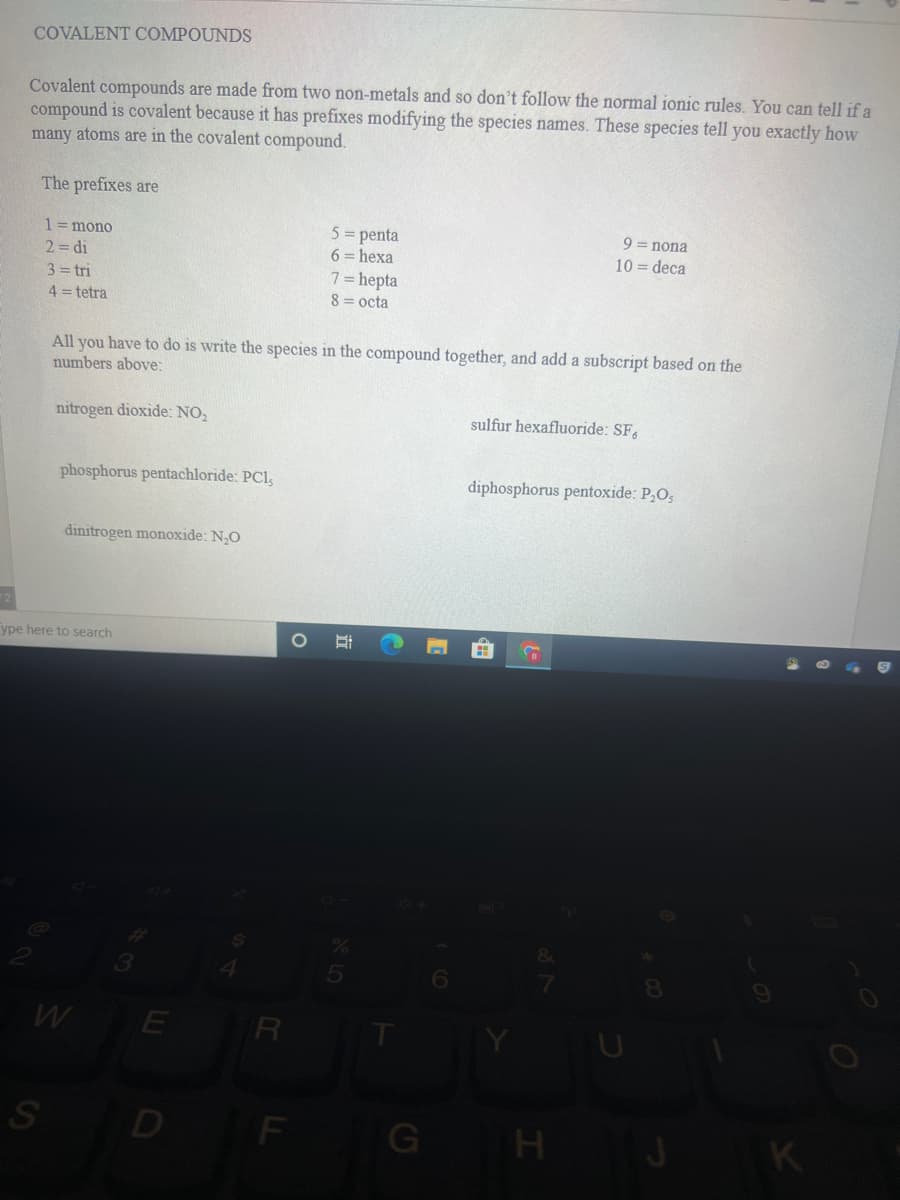COVALENT COMPOUNDS Covalent compounds are made from two non-metals and so don't follow the normal ionic rules. You can tell if a compound is covalent because it has prefixes modifying the species names. These species tell you exactly how many atoms are in the covalent compound. The prefixes are 5 = penta 6 = hexa 7= hepta 8 = octa 1=mono 9 = nona 2 di 10 = deca %3D 3 tri 4 = tetra All you have to do is write the species in the compound together, and add a subscript based on the numbers above: nitrogen dioxide: NO, sulfur hexafluoride: SF phosphorus pentachloride: PCl, diphosphorus pentoxide: P,O; dinitrogen monoxide: N,O here to search
Formal Charges
Formal charges have an important role in organic chemistry since this concept helps us to know whether an atom in a molecule is neutral/bears a positive or negative charge. Even if some molecules are neutral, the atoms within that molecule need not be neutral atoms.
Polarity Of Water
In simple chemical terms, polarity refers to the separation of charges in a chemical species leading into formation of two polar ends which are positively charged end and negatively charged end. Polarity in any molecule occurs due to the differences in the electronegativities of the bonded atoms. Water, as we all know has two hydrogen atoms bonded to an oxygen atom. As oxygen is more electronegative than hydrogen thus, there exists polarity in the bonds which is why water is known as a polar solvent.
Valence Bond Theory Vbt
Valence bond theory (VBT) in simple terms explains how individual atomic orbitals with an unpaired electron each, come close to each other and overlap to form a molecular orbital giving a covalent bond. It gives a quantum mechanical approach to the formation of covalent bonds with the help of wavefunctions using attractive and repulsive energies when two atoms are brought from infinity to their internuclear distance.

Step by step
Solved in 3 steps









